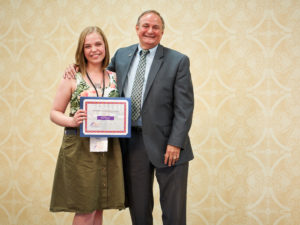Our Executive Director, Jim Theofelis, has dedicated his life to helping young people, as an advocate, a clinician and a leader in the movement to reform foster care and end youth and young adult homelessness. Previously, Jim shared why the time is right for solutions in Washington and why solutions must lead to systemic and structural change. Today, Jim shares what sustainable change means to him.
When I think about the reasons why I do this work, I think about the 16-year-old experiencing homelessness today. I also think about how this work will help the 5-year-old who doesn’t know that they may be vulnerable to homelessness one day. To me, sustainability means that our work will help young people today, tomorrow and into the future. The systems we help create to serve young people must continue to exist even as time passes, staff changes and organizations change.
I’m inspired by the Haudenosaunee Confederacy’s Seventh Generation value when I think about building a system that will serve young people today and will continue serving young people for years to come. The Haudenosaunee Confederacy is made of the Mohawk, Oneida, Onondaga, Cayuga and Seneca peoples, whose Constitution influenced the very Constitution we follow today. Their Seventh Generation value states that for any decision we make, we must consider the impact it will have today and for generations into the future.
We need to adopt this same perspective in our work. We need to think about how our decisions will not just impact the lives of young people and families accessing resources today, but seven generations from now as well. This means that we need to be honest and truly ask ourselves whether today’s systems were created to serve all young people and families equitably, and acknowledge the ways in which the LGBTQ+ community and people of color have historically been underserved and at times even harmed by public systems. We cannot forget this history when we make decisions today so we can do better by all families.
In the past few years, I’ve seen hopeful signs that as a state we’ve started to adopt this forward thinking. I worked on and applaud the creation of the Office of Homeless Youth Prevention and Protection Programs (OHY) to carry this work forward at the state level. OHY will continue to award grants, hold state level relationships and advocate for preventing and ending youth and young adult homelessness far into the future. Together, we have advocated for Anchor Community Initiative funding in the state budget, leading to $4 million dedicated to services in communities around Washington.

And nothing gives me more hope for the future than seeing more and more organizations realizing that we need young people’s leadership and involvement if we want to create a system that works for them. When I founded The Mockingbird Society, compensating young people for their expertise and input was a new and innovative idea. Now, instances of tokenism and pizza instead of real compensation grow more and more rare, and genuine partnership with young people is becoming the expectation. Young people’s wisdom and experience is increasingly shaping community plans and programs meant to last generations.
I’ve heard many young people and their families say that they need access to resources and support before even entering any systems. We need to look upstream at solutions like diversion and school support to truly help all young people and families. Well-funded and accessible diversion programs can make the difference between keeping stable housing and facing homelessness for families who need these resources. And as the first point of contact for many youth, schools that have the resources and capacity to support young people experiencing homelessness or housing instability have the potential to quickly connect families to services and resources. These types of interventions can help us strengthen families and prevent homelessness.
We can’t stop doing this work until we can answer the question “Who do our systems serve?” with “Everyone.” And once we achieve this goal, we need to make sure we’re prepared to carry this work forward at all levels. We need to do it for the 16-year-old experiencing homelessness today, for the 5-year-old whose future our decisions will impact, and for the next seven generations. That’s what sustainable change really looks like.

Leave a Reply